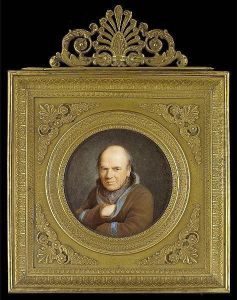Jean-Francois Chaponniere Paintings
Jean-François Chaponnière was a Swiss sculptor whose work is noted for its romanticism and classical influences, reflecting the transitionary period of European art in the early 19th century. Born on April 19, 1801, in Geneva, Switzerland, Chaponnière grew up in an era that was heavily influenced by the aftermath of the Napoleonic Wars and a burgeoning romantic movement that sought to express more emotional depth and individualism in art than the classical norms that preceded it. His upbringing in Geneva, a city known for its rich cultural heritage and as a hub for intellectual and political discourse, likely influenced his artistic directions and ambitions.
Chaponnière trained in Paris, which was then the epicenter of artistic innovation in Europe. Paris offered him exposure to the works of leading artists and the latest artistic trends, as well as the opportunity to engage with the vibrant intellectual community. His style, characterized by a blend of neoclassical forms and romantic expressiveness, quickly gained recognition. Despite his Swiss origin, Chaponnière's work was very much part of the broader European art movement, and he contributed to the romantic spirit that was sweeping through the continent, which sought to capture emotion, beauty, and the sublime in nature and human experiences.
His career, however, was tragically short-lived. Jean-François Chaponnière died prematurely at the age of 34, on June 17, 1835, in Macolin (Magglingen), near Biel, Switzerland. Despite his early death, Chaponnière left behind a body of work that continued to inspire and influence the world of sculpture. His pieces often depicted mythological and historical subjects, imbued with a sense of drama and emotional depth that was characteristic of the romantic era. One of his most recognized works includes a monument dedicated to Jean-Jacques Rousseau, showcasing his ability to capture the intellectual and emotional complexity of his subjects.
Chaponnière's contribution to the arts is remembered for its embodiment of the transition between classical restraint and romantic exuberance. His works remain a testament to the rich cultural milieu of early 19th-century Europe and continue to be studied for their artistic and historical significance. Despite his brief career, Jean-François Chaponnière's legacy in the world of sculpture and beyond endures, highlighting the impact that talented individuals can have on their craft, regardless of the length of their career.
